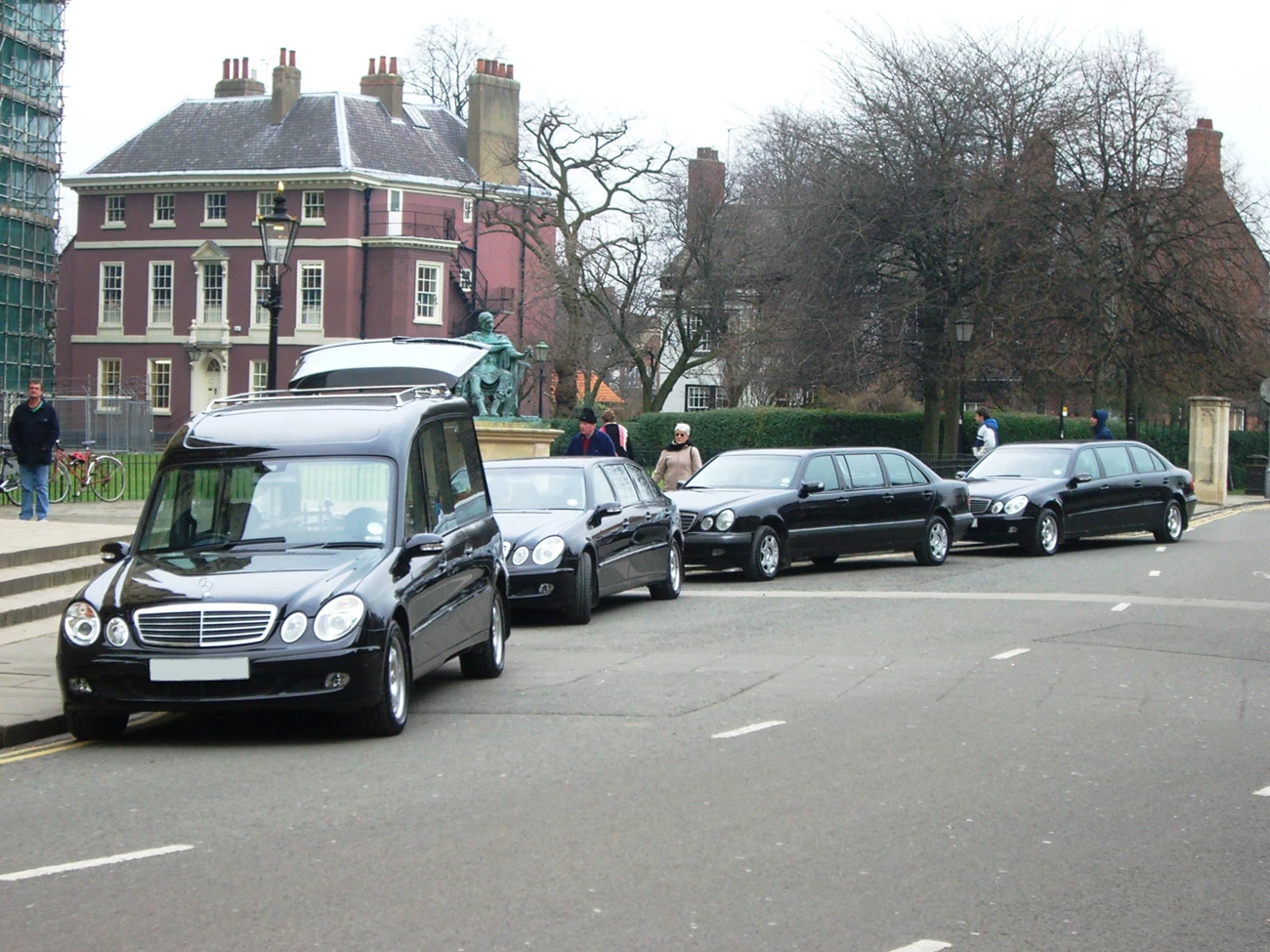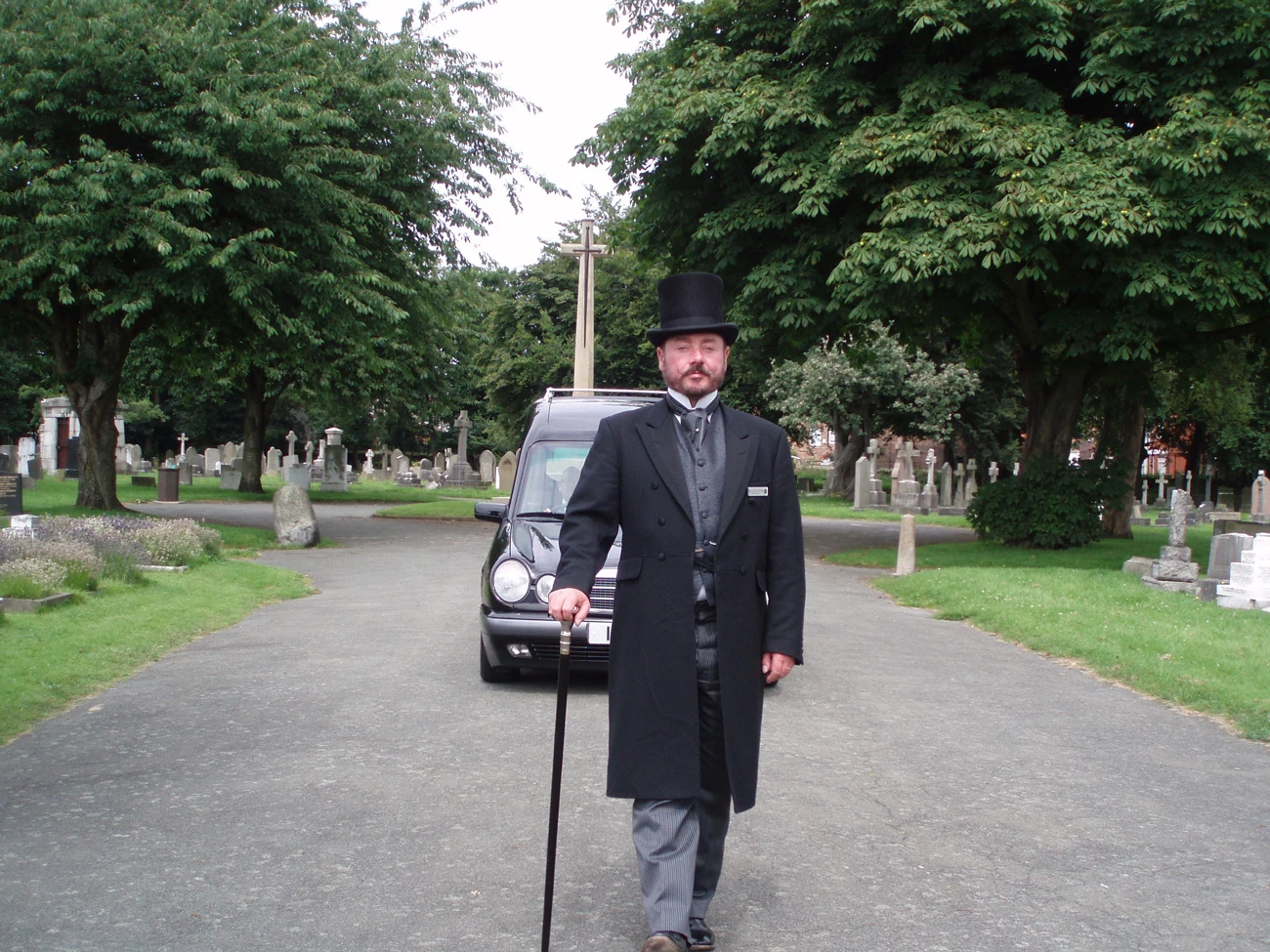14/05/2021 | Category: Commercial Insurance

We’ve all seen the sombre procession of a funeral cortege. It’s a very moving sight.
Behind the scenes, those funeral car drivers will be taking great pains to get that procession just right. It’s all part of ensuring a dignified farewell for the deceased.
So, if you’re new to the funeral industry, or even driving an unusual vehicle to fulfil a one-off request, what do you need to know? What preparations should you make, and what must you do on the day?
Read on for our top 12 tips, covering everything from insurance for commercial business to route planning to weird and wonderful alternatives to hearses.
Funerals in the UK
Every year, more than 600,000 funerals take place in the UK. They range from simple send-offs to elaborate farewells, but almost all will have a glass-sided hearse to transport the coffin and floral tributes.
Many also include a cortege of seven-to-nine-seater limousines to transport close family members. Some also have people carriers for additional mourners.
Traditionally, passers-by would stop, remove their hats, and bow their heads as the cortege passed in the streets. And that’s still the case in many close-knit communities where people might well know the person who’s died.
Driving a funeral car is a high-profile role that it’s important to get right. So, if you’re thinking of contributing your driving skills, here are our top 12 tips.
1. Go on a training course
Operating a funeral car is not just about driving. It also involves making the day go as smoothly as possible – and your contribution could make all the difference to a grieving family.
So consider a training course from the National Association of Funeral Directors (NAFD). You can take a Funeral Service Awareness course online over a matter of weeks, covering topics such as the key activities that take place on the day of the funeral; the attributes and skills you’ll need for a career in this field; and the stages of grief that mourners might be experiencing.
If you complete the course successfully, you’ll be awarded an NAFD Certificate of Training. It’s a useful step-up into an ever-changing industry that’s estimated to be worth more than £2 billion a year in the UK.
If you drive a limousine exclusively for funerals (or weddings), you are exempt from limousine licensing laws. You’ll still need a driving licence and commercial insurance though.
2. Discuss the family’s wishes
The family of the deceased are at the heart of all funeral planning, and it is essential that you meet their wishes wherever possible.
They can also tell you if their loved one had any special requests for his or her funeral: increasingly, people prefer a personal touch.
Many, however, simply want a dignified service in keeping with their own traditions. So, it’s a good idea to have a broad understanding of different cultural and religious funeral rites and traditions.
Many religions, including Islam and Judaism, stipulate that funerals should be held within a day of the death, so you won’t have time to hold detailed discussions with the bereaved family or carry out extensive preparation. Instead, you must be ready at a moment’s notice.
3. Understand the day’s schedule
You need to know timings and venues so you can draw up a timetable and keep it discreetly to hand. Make sure all family members are in agreement.
There could be multiple sites involved: for example, the home(s) of the family members who you are transporting, the place where the service will be held, the crematorium or place of burial, and the venue for the location or wake.
If there are several funeral cars travelling in the cortege, you must coordinate times and meeting places with the other drivers.
Ideally, you should be waiting to pick up the family around five minutes in advance of the agreed time. Any earlier can make them feel pressured on what is already a very stressful or even traumatic day.
It goes without saying that being late is highly unprofessional. So, leave plenty of time to make your first journey, and wait around the corner if necessary until nearer the allotted time.
4. Plan your route
You want to plan the most suitable routes to take between the various venues. All drivers must be aware of the route that the hearse will take.
Remember: it’s not necessarily the quickest, most sat-nav friendly route you want, but one that is going to be hassle-free and, perhaps, scenic.
Many families choose to go via somewhere of importance to the deceased, such as a football ground. This might be one of the most moving elements of the day for your passengers, so remember to pause for a moment at the site unless this would be dangerous.
Even if you regularly travel a particular route, make sure there are no roadworks or other diversions in place on the actual day of the funeral.
5. Consider passengers’ needs and safety
Find out in advance if your passengers have any specific needs and plan ways to cater for them.
Check whether any passenger uses a wheelchair, mobility scooter or other aid. Is your vehicle accessible to them? Do you know how to assist them, or load and secure a wheelchair safely?
Are any passengers hearing impaired, or are there any other language or communication barriers? And if so, will another family member be able to interpret if necessary?
You should also have a plan in place for emergencies that takes all your passengers’ needs into account.
6. Prepare your vehicle
Make sure you keep your vehicle in tip-top condition.
Regular servicing and MOTs are essential. Carry out routine maintenance checks, too, keeping an eye on tyres, wipes, screen wash, water, oil, and brake fluid.
Make sure it’s stocked with safety essentials such as a first aid kit and fire extinguishers. And don’t forget to get cover with suitable commercial insurance.
Keep your vehicle sparkling clean, inside and out. Check that upholstery is in good condition, and that passengers can access seatbelts easily. Does your car smell fresh at all times?
A final touch is to keep tissues, wet wipes, and bottles of water in the passenger area. This might be one of the very worst days of your passengers’ lives, and small gestures could go a long way. For an enduring career in the funeral industry, you’ll need to go above and beyond wherever possible.
7. Ensure you look the part
Usually, the undertaker you’re working for will have a strict uniform. All you need to do is make sure it’s clean and ironed on the day.
If you’re driving a special vehicle, it’s worth checking with the family what you should wear. They may be trying to avoid the sombre look of a regular funeral.
8. Load the hearse carefully
Whether you’re driving the hearse or a family car, you should help load the coffin into the vehicle and secure it. Coffins are traditionally carried and placed feet first.
You’ll also need to ensure the flowers have arrived and arrange any floral tributes on and around the coffin. The family may have given precise instructions for which wreaths belong where.
9. Make sure your passengers are comfortable
Customer service is a huge part of this job. It’s vital that you are both helpful and unobtrusive to your passengers, whose emotions are likely to be running high.
Have a read of this useful blog written by an Australian funeral family car driver. He recommends introducing yourself when you arrive to pick up the family, politely refusing offers of tea or coffee, and waiting patiently by the car while they get ready.
If safe, open all the doors of your vehicle so that passengers do not have to slide across the seats to get in.
The blog writer also reminds chauffeurs to check with the passengers that the air conditioning or heating is at the correct level.
Don’t invite conversation but respond politely if they ask you questions. Avoid contentious topics such as politics at all costs!
On the rare occasions that passengers’ emotions get the better of them, and they behave rudely or oddly, stay silent and focus on driving.
10. Learn how to drive in a cortege
It’s the hearse driver’s job to lead the cortege.
If you’re driving a family car, you need to follow the hearse at a respectful distance – without leaving enough space for a non-funeral car to nip in! This may be tricky for any people carriers or unusual vehicles, as they’re not recognisably part of the procession.
While you are following the hearse’s lead, you still need to check your mirrors and indicate. It’s surprisingly easy to forget this when driving in convoy.
If the hearse stops for any reason, you should stop too, unless it’s unsafe. Don’t overtake unless told to by the funeral director.
Of course, don’t break laws to keep up with the hearse, e.g. run a red light. If this happens, the hearse will try to slow down until you can get through the lights and catch up.
11. At the chapel
The hearse will stop right outside the chapel (or other place of worship or venue), leaving enough space for the doors to open.
Family cars will stop a short distance away – keep them together in a neat line if possible.
Once you’ve helped the family members out of your vehicle, you need to turn your attention to the coffin. Drivers often double up as pallbearers, unless family or friends of the deceased have opted to carry out that role.
If you’re not carrying the coffin, there will be other non-driving roles for you: sorting out the flowers or directing people to their seats. Always follow the funeral director’s instructions.
12. After the funeral
When you have dropped off the family for the last time, do a final sweep around your vehicle to make sure nothing has been forgotten.
Mourners are often in a state of distress and are likely to be distracted. So, look out for flowers, glasses and bags, and return them to your passengers before you say goodbye. This saves you having to make an extra trip and saves them extra worry on a difficult day.
Unusual funeral cars
As we mentioned above, some people reject traditional hearses for their funerals or those of their loved ones, and instead request something personal.
Prince Philip’s Land Rover hearse, which he helped design, was the most high-profile recent example. This British classic perfectly encapsulated the rugged, reliable image of the late Duke of Edinburgh.
Others want standard hearses and limos, but in bright colours. They see it as a simple way of cheering up a funeral and turning it into a celebration of the life of the departed.
Other requests range from the quirky to the outlandish. They include specially adapted milk floats, military tanks, and bicycles or motorcycles with sidecars. One digger driver was even transported to his funeral in the bucket of a JCB!
So even if you’ve never thought of entering the funeral business, if you own or drive an unusual vehicle, you could find yourself leading a procession one day. Just remember to make sure you’re covered by commercial insurance.
Get a quote from Insurance Choice Commercial today
For the right person, a career in the funeral industry is a very rewarding job. It’s also one where it’s extremely important that you get it right, preparing each funeral with care.
At Insurance Choice Commercial, we arrange tailored commercial insurance to suit your business needs, whether you’re a sole trader or running a major firm. We’ve been arranging low-cost, high-value insurance for more than 20 years, covering a huge range of trades and companies.
Benefits of the policies we arrange can include comprehensive vehicle cover, public liability cover, and business equipment cover.
We can offer flexible payment solutions, including the option to pay in monthly instalments. Contact us today for a quote.
Policy benefits, features and discounts offered may very between insurance schemes or cover selected and are subject to underwriting criteria. Information contained within this article is accurate at the time of publishing but may be subject to change.
